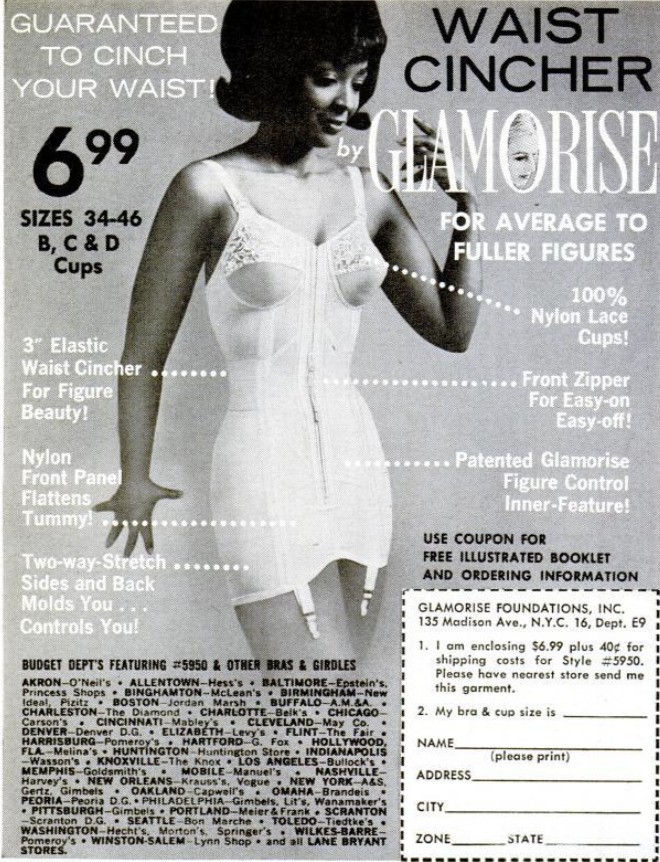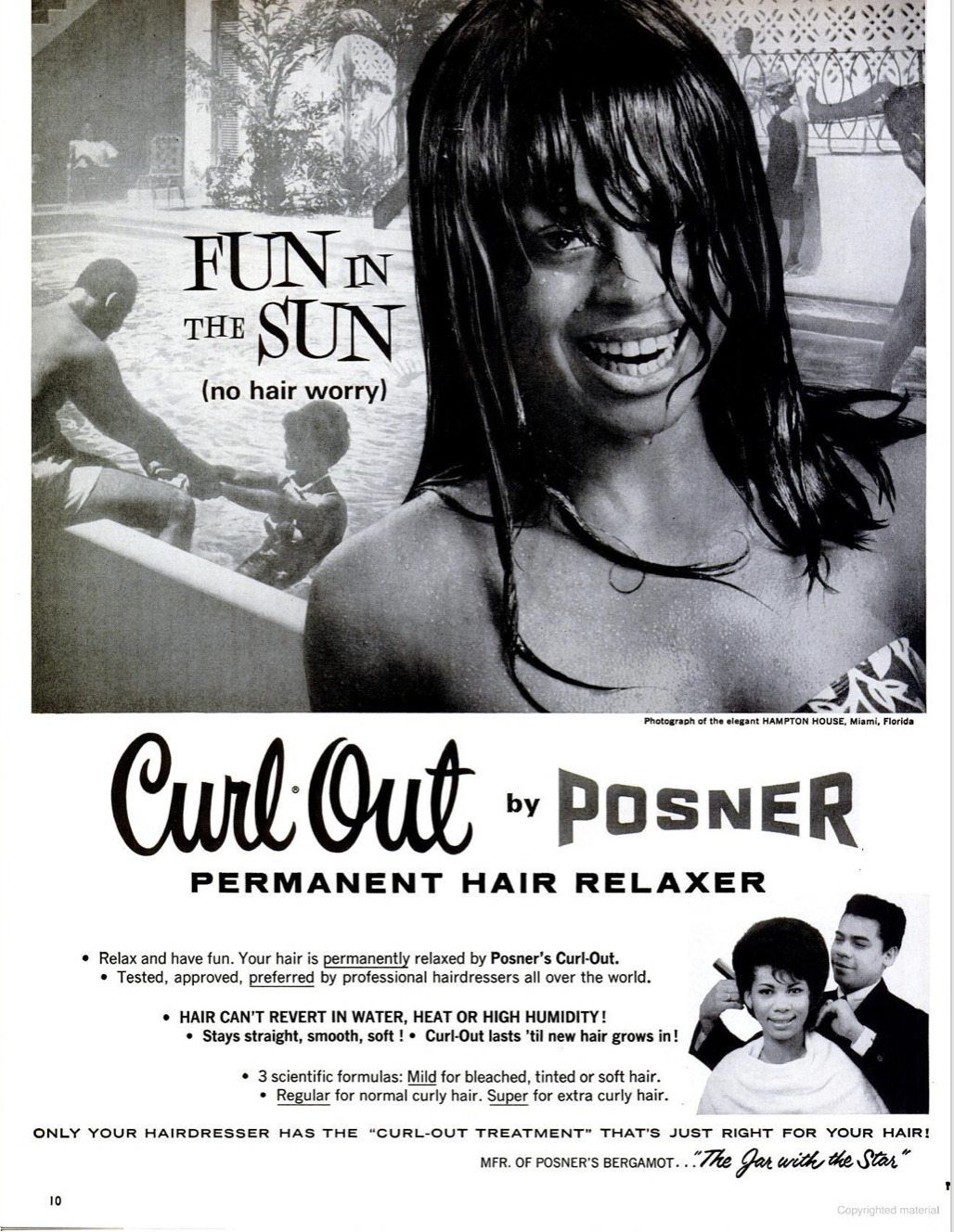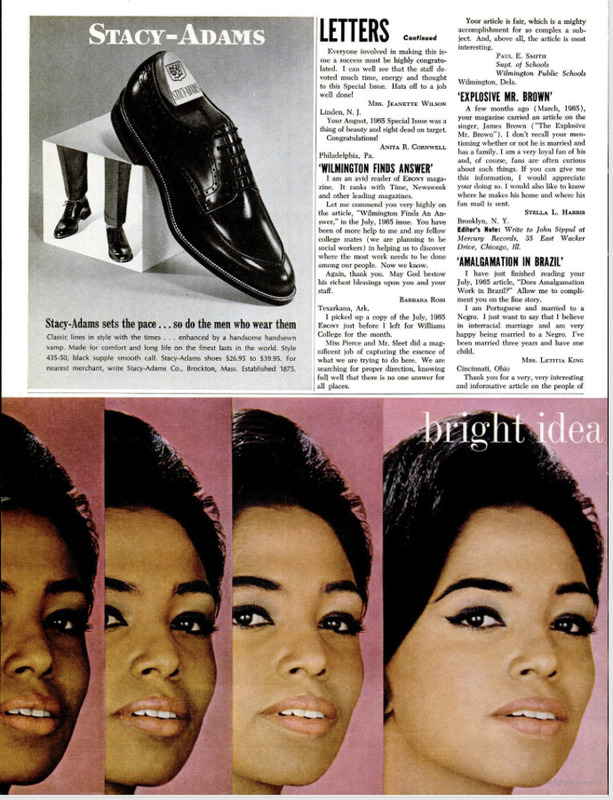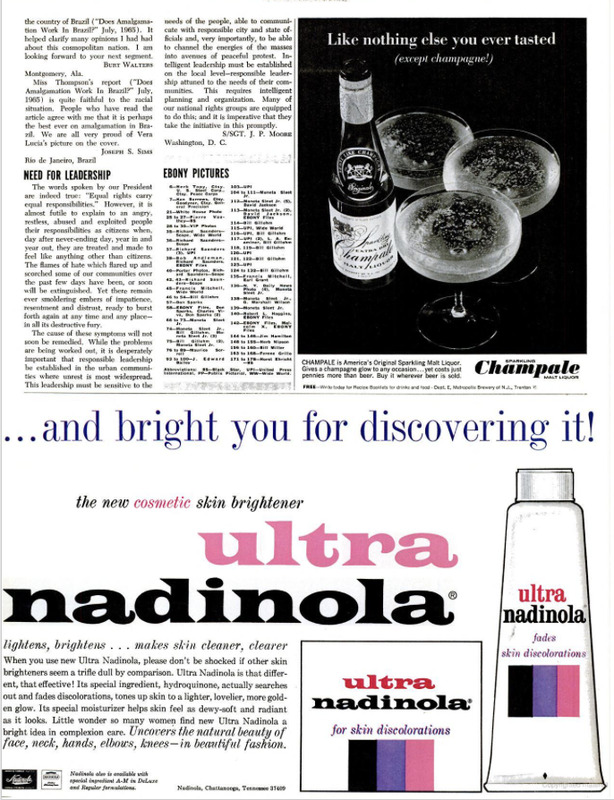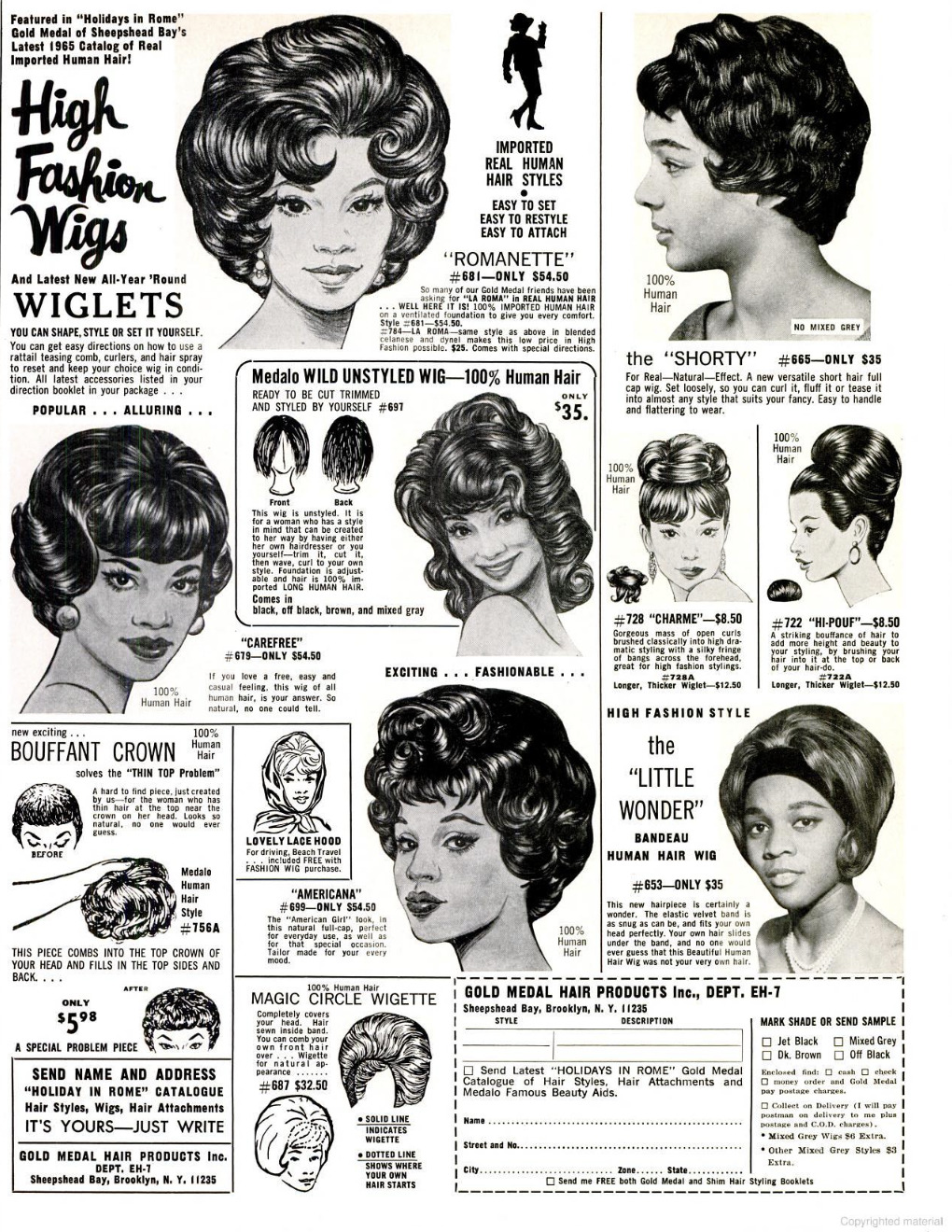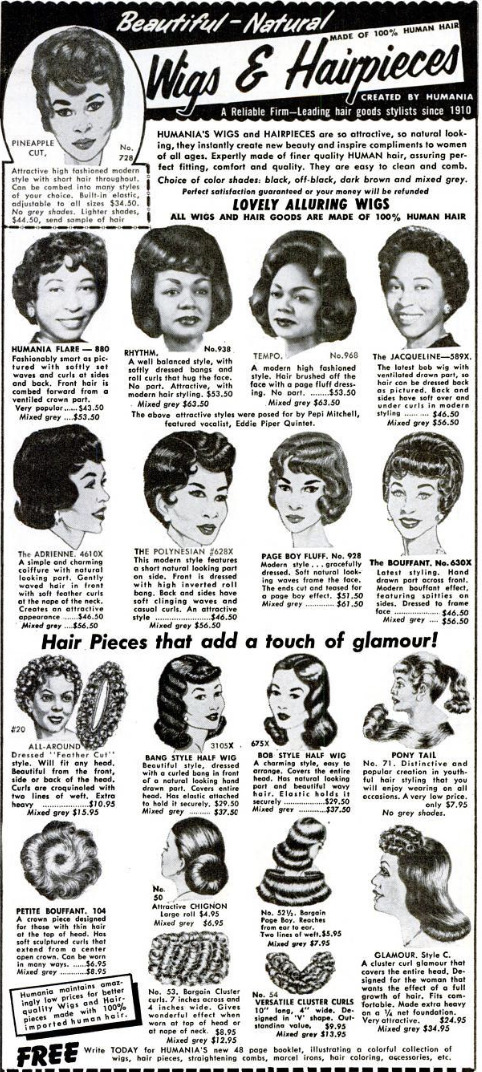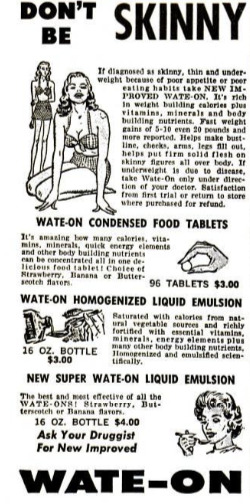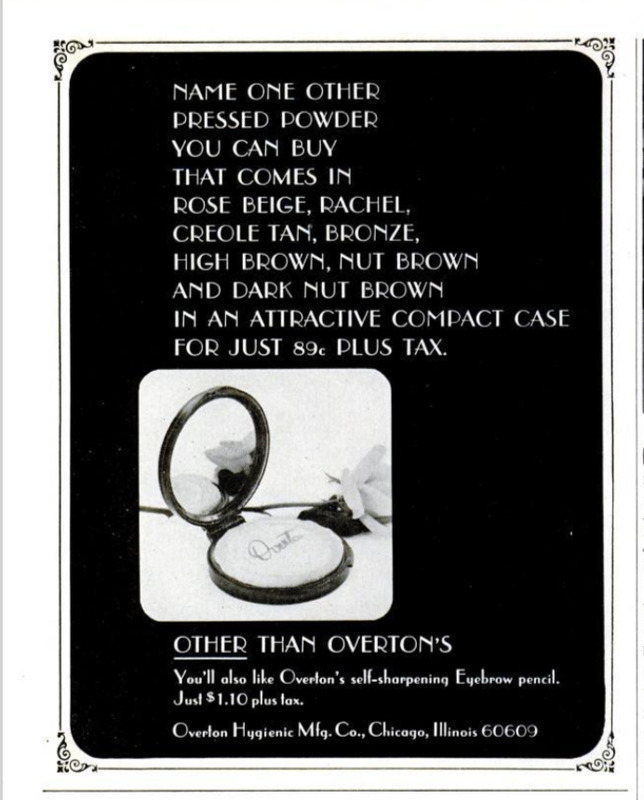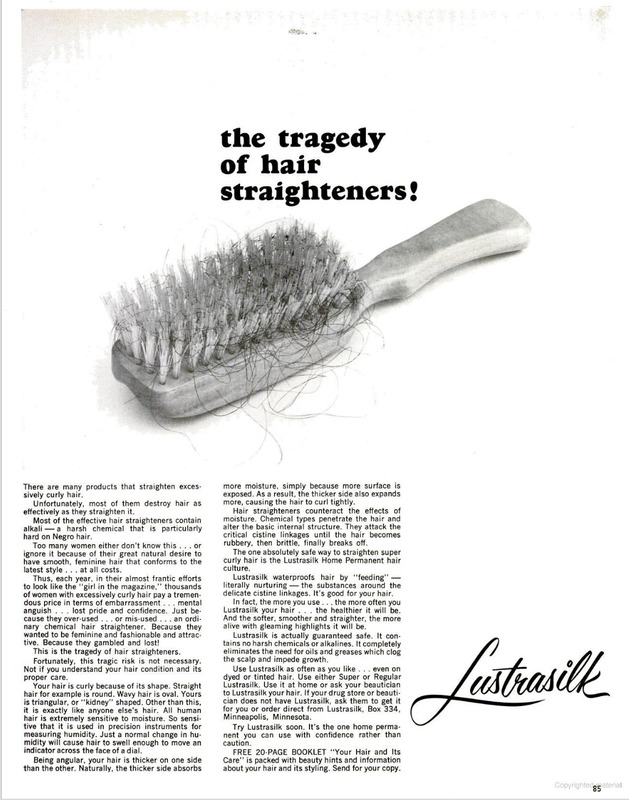The Indoctrination of White Beauty: Methods
There were different ways that the advertisements in 1965 EBONY magazines communicated the white standard of beauty that Black women were encouraged to pursue. These advertisements insinuated that light skin, thin bodies, and long straight hair were the most desirable form of beauty. On top of this, there is an ongoing discussion about gender inequality in 1965 Black America. The always evolving and sometimes contradicting ideas of beauty are evidence that both race and beauty were socially constructed, with Black men in control of the flow. These advertisements also show that in many cases, Black women were aware that the products being marketed to them could be detrimental to their health, but they still participated.
Bright Idea was an advertisement created by Ultra Nadinola with the hopes of selling their cosmetic skin brightener to Black women of darker skin tones in 1965.The advertisement shows four images of the same Black woman, with each subsequent image getting a shade lighter. This suggests that Black women of lighter skin tones or those who choose to seek a lighter complexion are more intelligent than Black women of darker skin tones. Referring to the product as a means of “complexion care” medicalizes darker skin as a problem that needs treatment by a skin brightener to be resolved.
The Waist Cincher advertisement was created by Glamorise Foundations, Inc. to advertise their waist cinching product to Black women of average and fuller figures in 1965. Though the advertisement features slim Black women, it suggests that anyone who is not skinny should try to be by saying, “for average to fuller figures”.
This Posner advertisement was created to promote their permanent hair relaxer to Black women with naturally curly hair in 1965. It Shows a Black woman in the pool in the background with an afro and another Black woman with straight hair who is visibly wet, yet her hair remains straight. She takes up most of the advertisement leaving the other girl small and in the back. This indicates that because she has straight hair, she is more valuable than the other girl.
It is evident that all these advertisements lack complexion diversity, with most of the models being fair skinned which makes for an explicit dialogue around colorism. On the other hand, the discussion about featurism is implicit. Many of the models being advertised have Eurocentric features like a slim nose and a small build. In some cases, the advertisements being directed toward Black women don’t even include Black women.
Both High fashion wigs by Humania and Beautiful-natural hair pieces by Gold Medal Hair Products Inc. were created to advertise their high-fashion wigs and hairpieces to African American women in 1965. The Black woman in the Humania advertisement is depicted as fair-skinned with white features. Similarly, the advertisement by Gold Medal Hair Products Inc. ironically touts the wigs as “natural” and showcases a skewed ratio of White women to Black women with Black women being the minority. This is particularly interesting considering that this advertisement’s primary audience is Black women. This reifies that whiteness was such an aspiration of beauty, that it was an effective marketing ploy.
Despite evidence that EBONY magazine promoted beauty advertisements that upheld white standards of beauty, there were also more inclusive advertisements that countered those ideals. Don’t Be Skinny, an advertisement created by Wate-on to sell their weight gain supplements to Black women portrays a thin framed woman in the back with a fuller sized woman seductively posing in the front. This is antithetical to the advertisements which told Black women that being small was more attractive. This says that women were to just change what is desirable on the whim of men. This is an example of how social constructions ebbed and flowed as needed to uphold white-male superiority.
The advertisement created by Overton’s to advertise their wide range of pressed powder shades displays a range of colors including deep tones like “Nut Brown and Dark Nut Brown”. They claim to be the only company with this range, indicating that the beauty industry was not typically keeping Black women in mind. This further emphasizes that advertisements in 1965 EBONY magazines were intentionally placed there to be viewed by Black women.
The tragedy of the Hair Straighteners advertisement, created by Lustrasilk uses hair anatomy education to advertise their hair straightening product to Black women. This advertisement is meaningful because it acknowledges that though there were many straightening products on the market, they all caused damage to natural Black hair. Despite knowing this, many Black women still used hair straighteners to conform to the white beauty standard. “Too many women either don’t know this… or ignore it because of their great natural desire to have smooth, feminine hair that comforts to the latest style.”Intentionally using a product that caused damage to their hair shows the state of desperation some Black people felt to appeal to white folks in the period after the Moynihan report. It was bold of this advertisement to suggest the desire to have straight hair was natural, knowing Black women were being influenced by the profitable industry’s pervasive advertisements. Overall, these advertisements show that though advertisements that upheld white beauty standards were prevalent, they were not universal.
The few advertisements that were about Black men, always depicted them in suits. Both the Magic Shaving Powder advertisement and the Supreme Beauty Products Co. advertisements were created to sell their beauty products to Black men. It is notable that both show Black men in a suit. Considering the imbalanced ratio of advertisements about beauty targeted to Black women and Black men and the fact that the senior leadership of production is Black men, one could argue that Black men thought of themselves as superior to their female counterparts. They may not have felt the need to have such a large push for Black men to fit the aesthetic because they already held themselves in such a high regard. This elucidates that even though race was an oppressor for Black women, gender was another.

